Throughout automotive history, some cars have been misunderstood or dismissed as failures when they first appeared.
Designs that seemed too radical, technologies that felt unnecessary, or styles that broke every rule often led to skepticism or ridicule.
Yet, many of these so-called “mistakes” would later be recognized as masterpieces, paving the way for innovations we take for granted today.
As the years passed, their influence became undeniable, inspiring future generations of vehicles and reshaping what we expect from the automobile.
Let’s celebrate 12 such cars that were truly ahead of their time.
While car theft remains a serious issue worldwide, not all vehicles are equally at risk.
Some cars are so undesirable to both thieves and buyers that they’re practically “unstealable.”
A lack of demand for parts, outdated technology, and unremarkable performance often make these models unattractive to criminals.
Thieves typically target vehicles with high resale value or popular parts, but cars with dated features or a reputation for reliability over excitement are often ignored.
In fact, the Insurance Information Institute notes that theft rates are closely tied to a model’s popularity and ease of resale.
It’s ironic—sometimes the best anti-theft device is simply driving a car nobody wants.
Automotive history is riddled with fierce rivalries and high-stakes one-upmanship. While some cars are born from a desire to innovate or dazzle the world, others exist for a far pettier purpose: to beat the competition at all costs.
These vehicles weren’t designed to break new ground or win over critics—they were built because a rival dared to succeed first.
From Detroit to Tokyo, brands have unleashed cars made not for glory, but for sales charts, fueled by corporate ego and the simple urge to outsell, not outshine.
This spiteful drive has produced some of the industry’s most memorable—and occasionally questionable—machines.
Throughout automotive history, there have been moments when designers dared to dream beyond the ordinary. While most cars blend into traffic, some emerge as bold statements, instantly recognizable—even polarizing. These vehicles are the result of creativity unleashed, where teams rejected safe choices for something truly unique.
From swooping curves to angular lines and wild proportions, these cars challenged expectations and often divided opinions.
Their legacy? Proof that risk-taking and unconventional design can leave a lasting impact on both the industry and our collective imagination.
For more on automotive design breakthroughs, visit MotorTrend.
Across driveways and mall parking lots, a curious paradox plays out: vehicles engineered to conquer mountains, deserts, and untamed wilderness instead spend their days idling in suburbia. These rugged off-roaders boast advanced four-wheel drive systems, impressive ground clearance, and heritage built for adventure. Yet, for many owners, the wildest terrain they see is a gravel driveway or the occasional speed bump.
It’s a trend that has only grown as automakers blend luxury and off-road prowess, creating status symbols as much as trail machines. This list dives into 12 of the most capable off-road vehicles, designed to roam but priced to sit—living lives far removed from the mud and rocks they were born to conquer.
The Acura Integra turns 40 this year. The most recent iteration of it was released as a 2023 model with turbocharged power, an available six-speed manual gearbox, and a liftback body style. For 2026, Acura’s sport compact receives a variety of visual and technology updates that make it more distinctive and user-friendly.
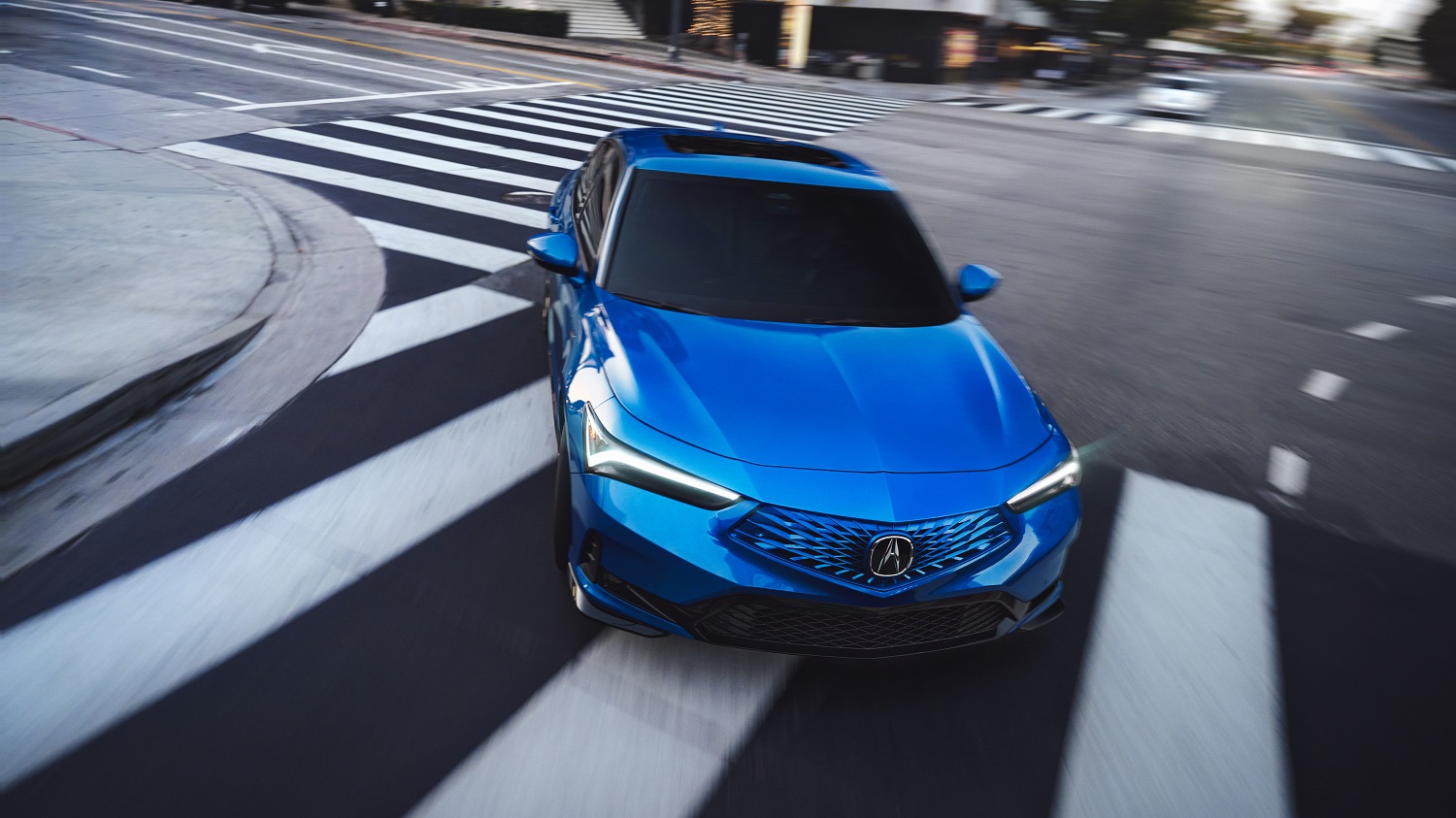
Three new options join the palette of available colors: Solar Silver Metallic, Urban Gray Pearl (which you may recognize from the 2025 TLX Type S we reviewed), and Double Apex Blue Pearl. Acura automatically pairs the latter (and Performance Red Pearl) with a new color-matched grille; Urban Gray Pearl and Platinum White Pearl Integras can be equipped with a matching grille as an option. Otherwise, Integras in all other colors come with a black grille, with Double Apex Blue Pearl and Performance Red Pearl models having that as an option. Long story short: you can opt for a black grille with every Integra color, and the body-color grille on several.
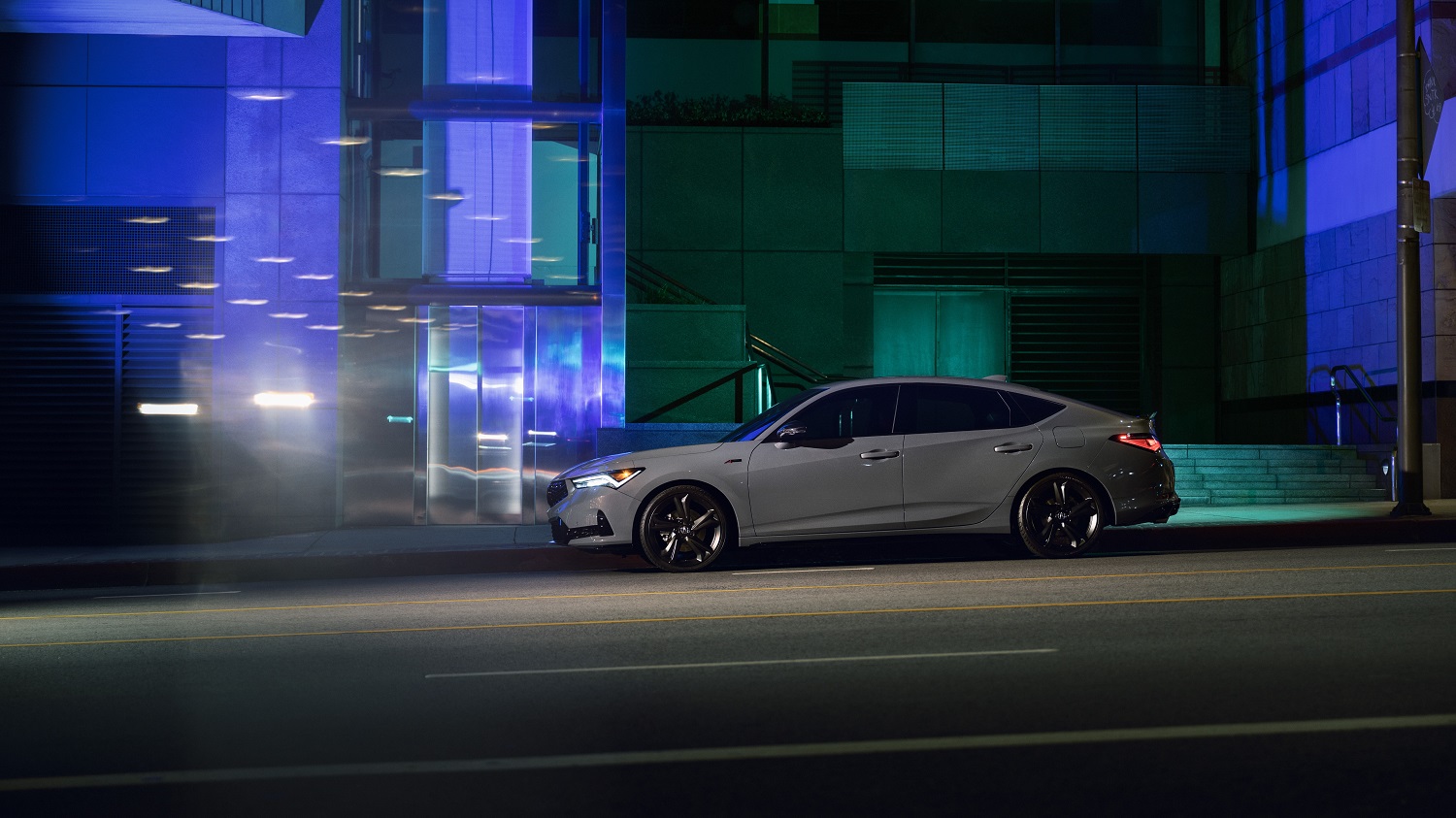
The A-Spec package gets updated with a new body kit that adds glossy black side spoilers to the corners of the front fascia and side sill accents.
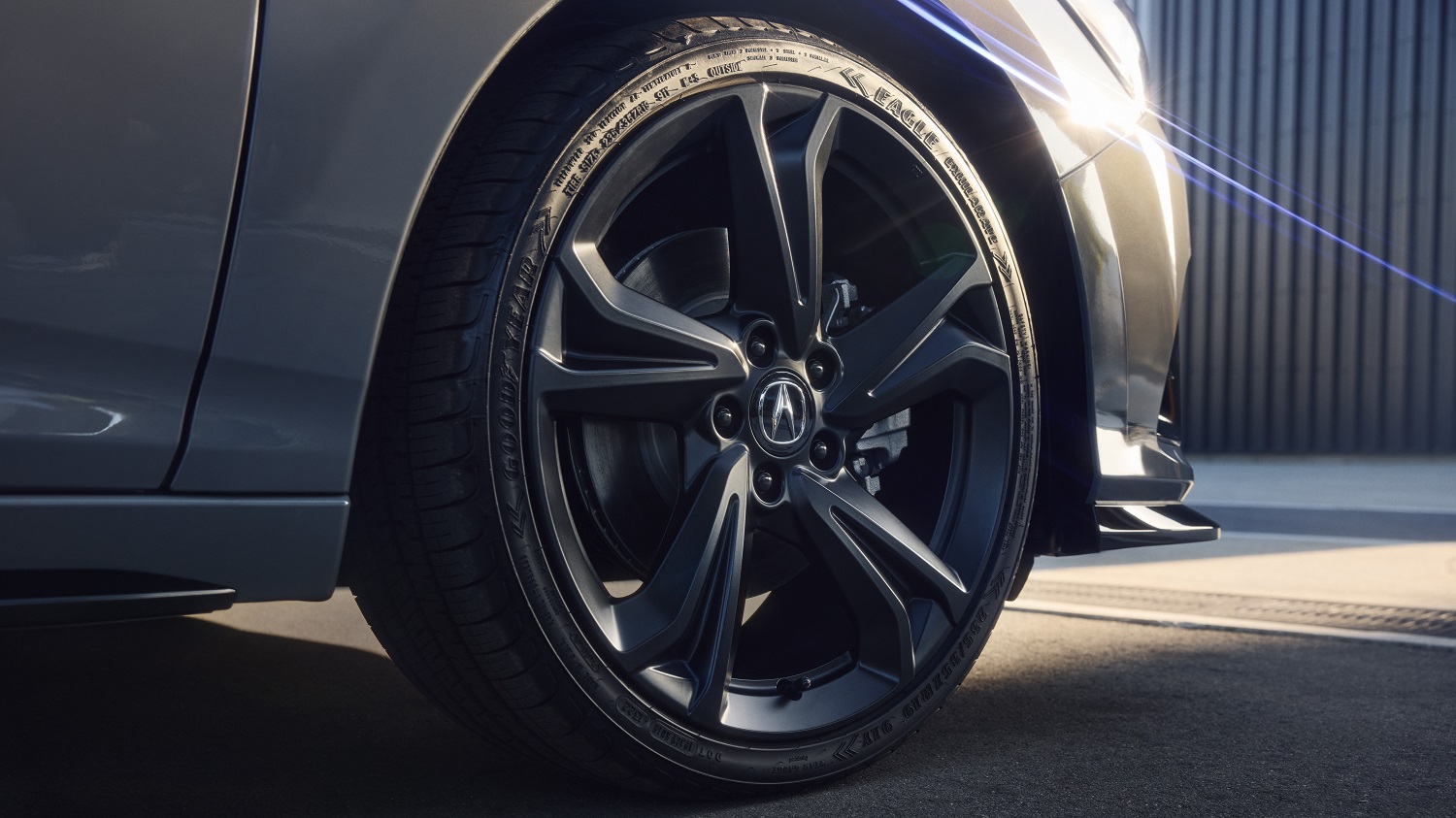
The A-Spec 18-inch wheels have also been redesigned and now come in black instead Shark Gray.
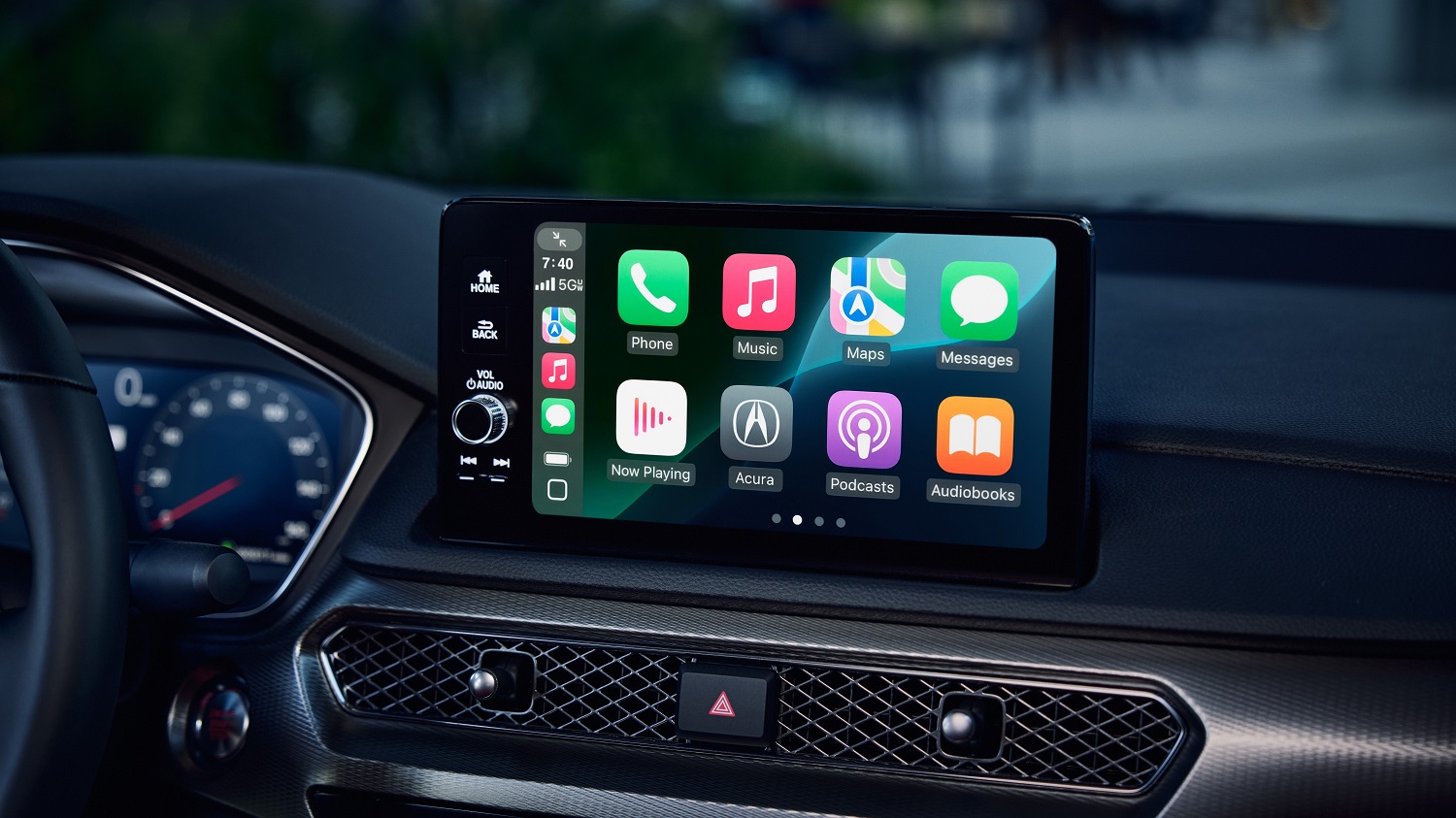
Integras with the A-Spec package receive the bulk of interior revisions for 2026. In addition to the new dash trim, larger nine-inch infotainment touchscreen with a faster processor, wireless Apple CarPlay and Android Auto, and wireless phone charger (all standard equipment for ’26 Integras), the A-Spec package includes extended ambient lighting and additional color-specific visual updates.
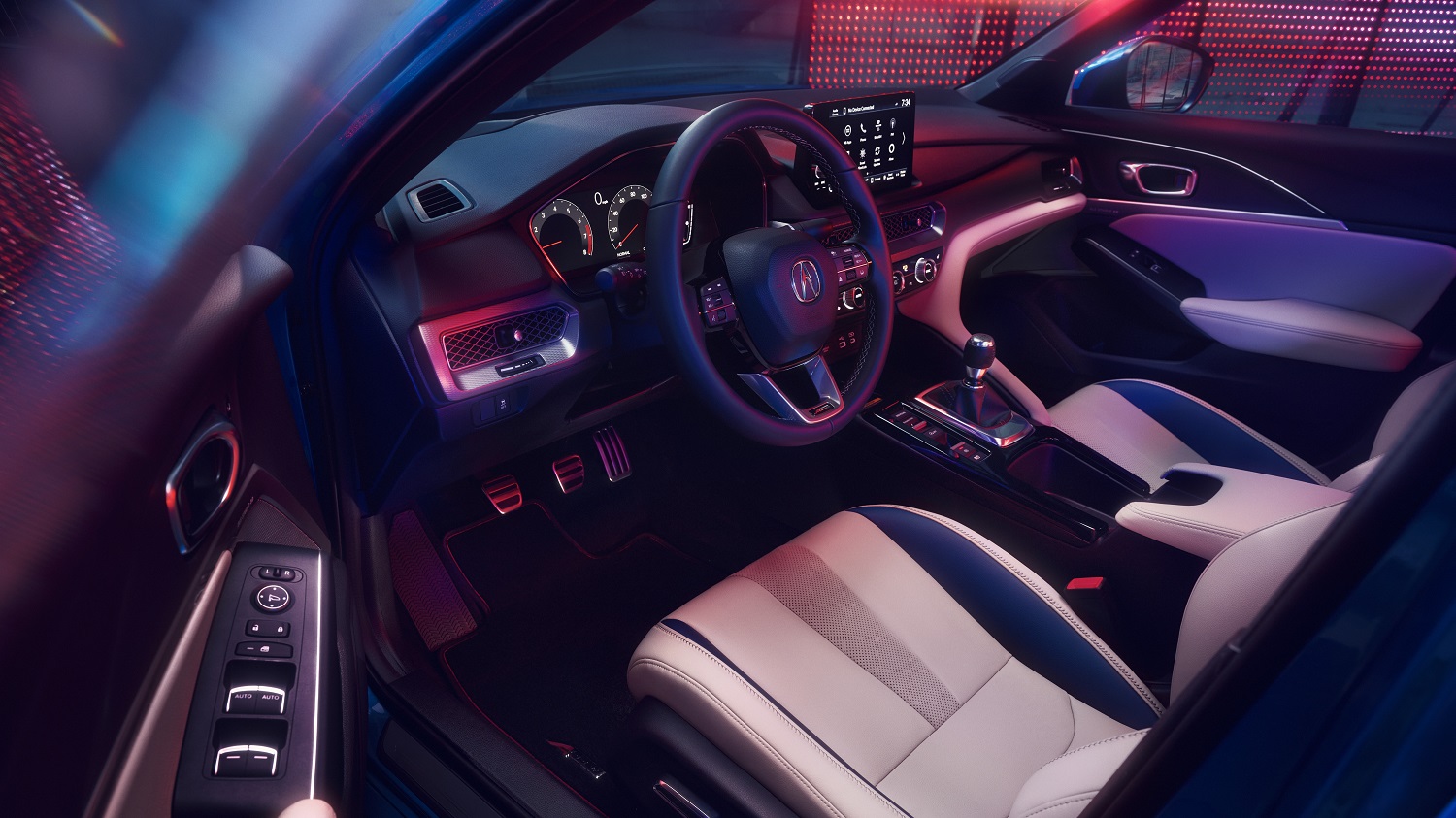
According to Acura, “Integra A-Spec models with the Orchid interior gain new blue micro suede inserts, first seen on the 2025 ADX. Integra A-Spec models with the Ebony interior sport new yellow stitching on the seats, steering wheel, shift boot and door panels.”
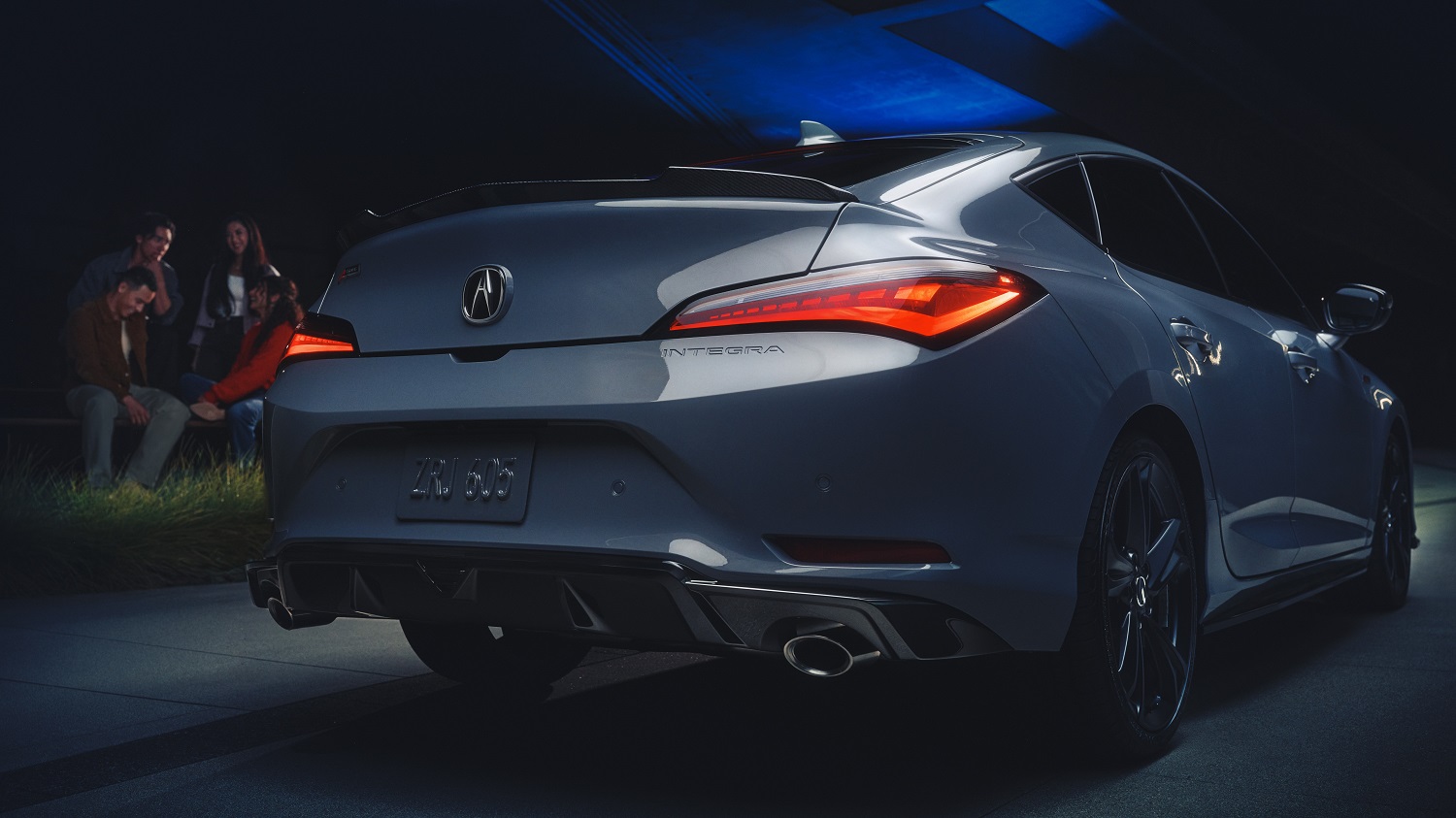
Integra enthusiasts in the U.S. had to wait more than 20 years for its full return (the Acura RSX of the early to mid-2000s that we got here was called the Honda Integra in other markets). The good news is that they only have to wait until late August for the updated 2026 model to arrive in Acura dealerships. Pricing hasn’t been released yet, but it’s reasonable to expect it to increase slightly from the 2025 base price of $33,000.
Some cars are rare people few people ordered them. In the case of the 1970 AMC Trans-Am Javelin, it was rare because AMC built it that way—only 100 were distributed to 2300 dealerships. All were painted red/white/blue with 390 four-speed, Go Package with 3.91 gears, adjustable spoiler, gauge package, five-spoke mags, nifty two-spoke steering wheel, and more.
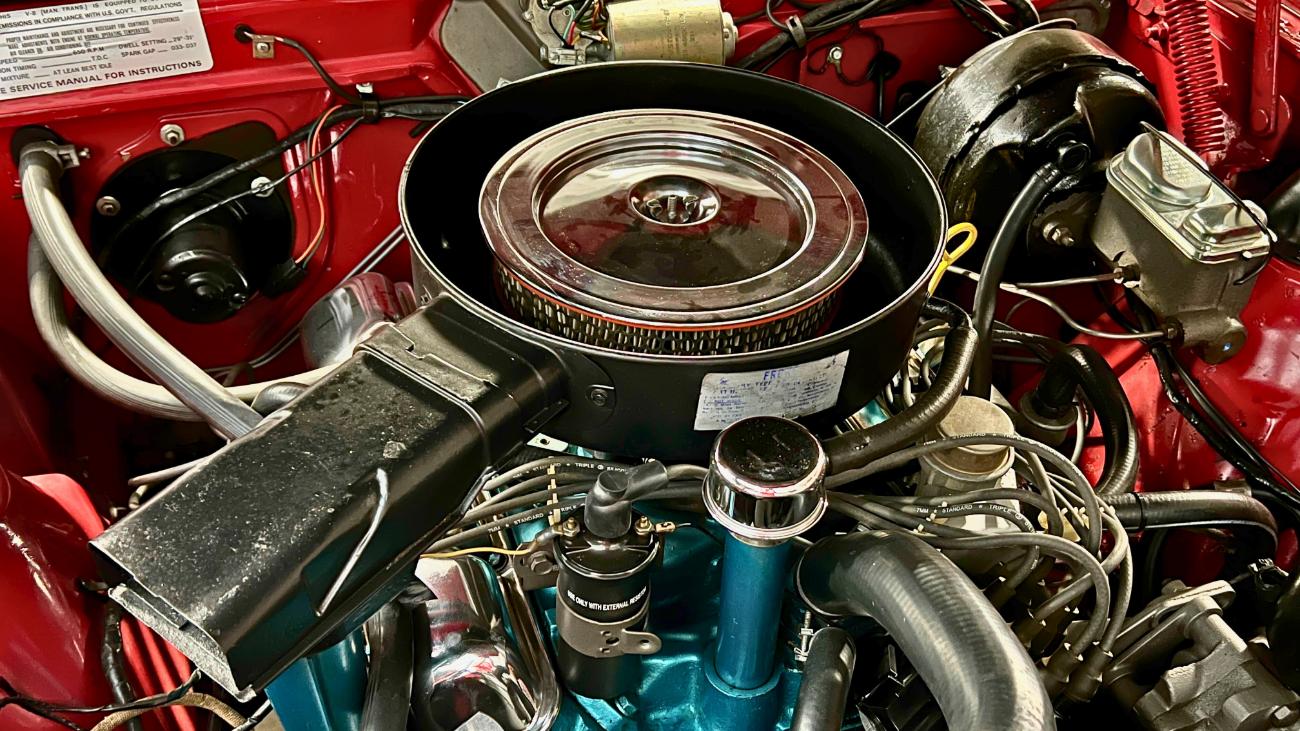
Yet you could be forgiven to think this was AMC’s Trans-Am homologation special, as that was reserved for the Mark Donohue Javelin. Why confuse enthusiasts decades later? That would be too easy.
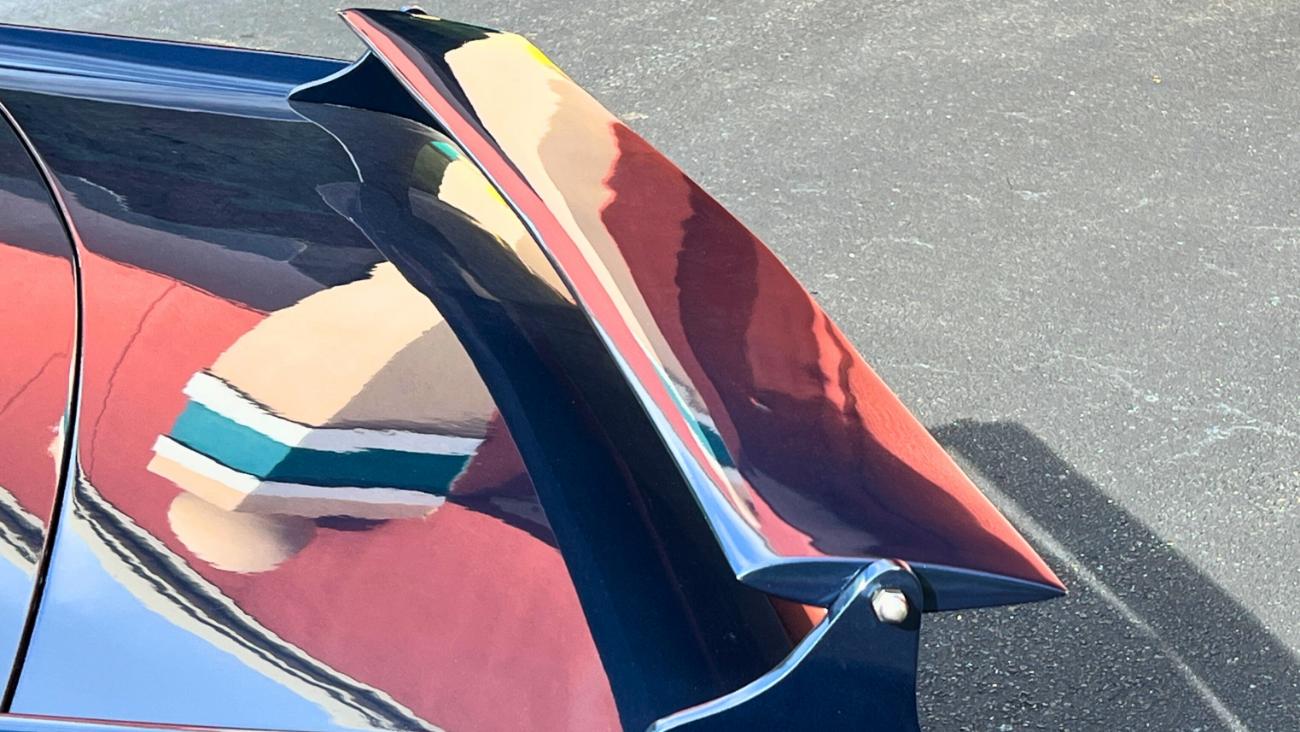
The Trans-Am Javelin was created as a publicity vehicle to highlight AMC’s participation in SCCA racing. It was a halo car to get people talking—compare that to the Donohue Javelin, which was basically a regular Javelin SST (some believe base Javelins may have also received the Donohue treatment) with a fancy rear spoiler (different from the Trans-Am’s) and hi-po engines.
Noted Pontiac author Don Keefe from the Iron Stable Garage brought Muscle Car Campy this Trans-Am Javelin on loan from a customer. They took the ram-air pony car around the streets of Tampa while extolling the unique updates AMC made to the Javelin for 1970.
If you enjoy this video, you can view more Muscle Car Campy videos here!
Right now on AutoHunter, you can find this customized 1959 Chevrolet Apache 3100 Stepside, which is based on the chassis and suspension of a 1972 Chevrolet C10. Power comes from a new 350ci V8 crate engine and is delivered to the rear wheels through a TH400 three-speed automatic. Finished in light blue over a tan cloth interior, this Chevrolet “Task Force” pickup comes from the Missouri selling dealer with a clear title.

As part of a custom build process, the body and Stepside bed were refinished in light blue. Exterior features include a chrome front bumper, chrome grille, wrap-around windshield with body-color visor, chrome mirror housings, and side exhaust outlets in front of the rear wheels. The floor of the bed is lined with wood planks, which are separated by body-color bed strips.
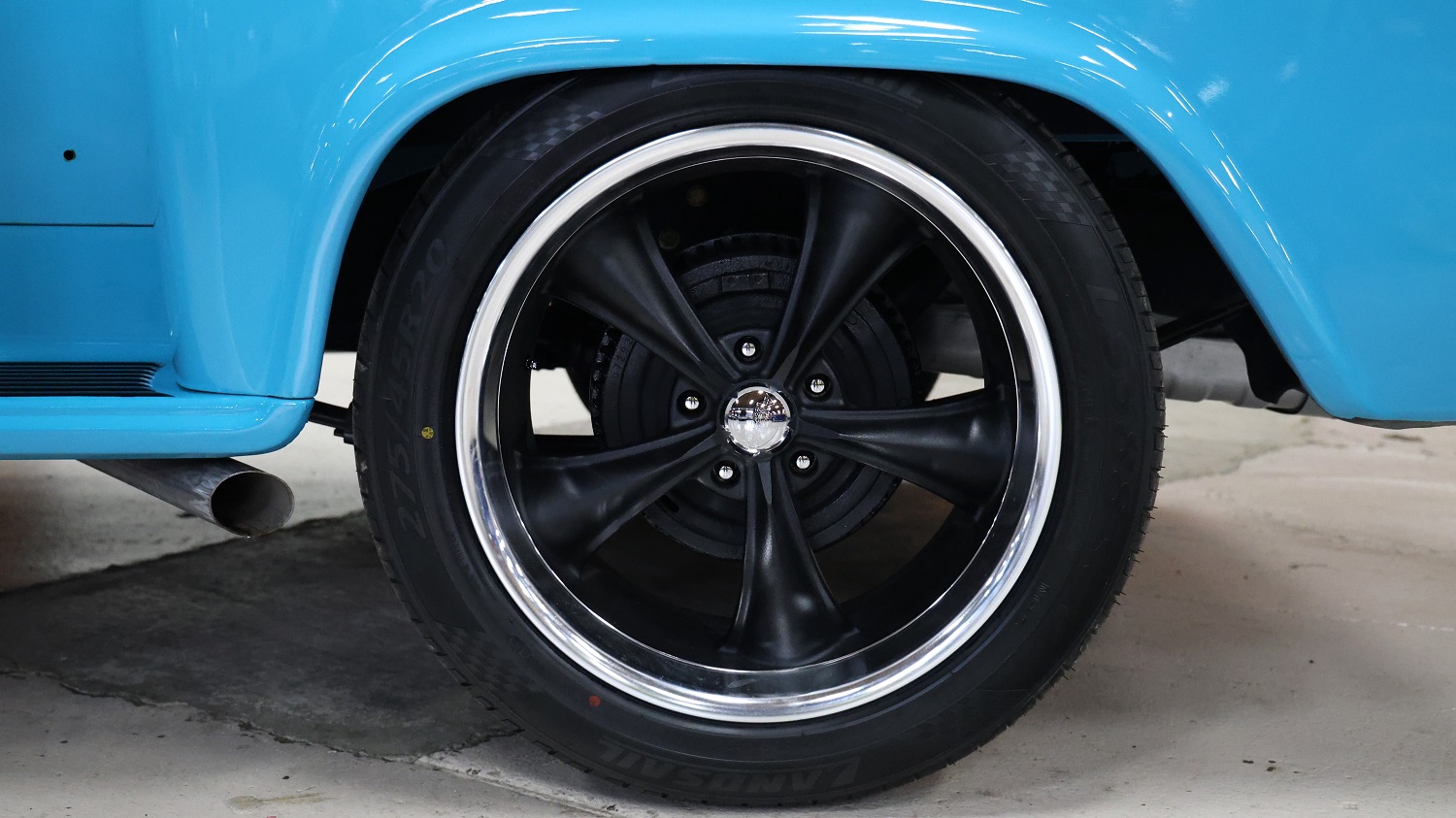
This classic Chevy truck rides on a set of black 20-inch American Racing wheels wrapped in 245/45 front and 275/45 rear Landsail LS588 radial tires. Behind those big wheels is a set of power front disc and rear drum brakes.
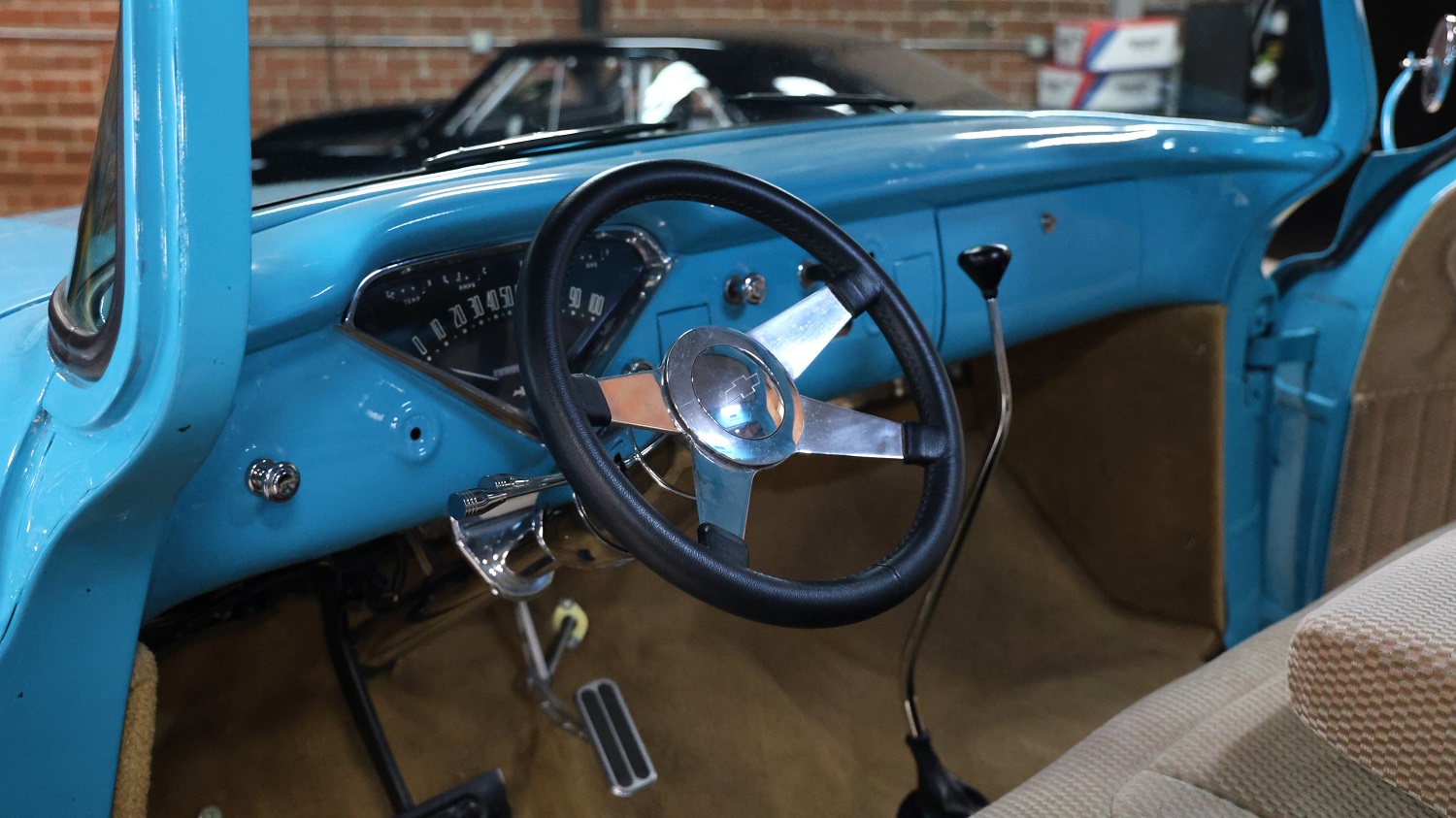
Inside, the cabin has been updated with tan cloth seating and door panels. Features include a tilt steering column, power steering, aftermarket four-spoke steering wheel, floor-mounted automatic shifter, and fold-down center armrest.

Instrumentation consists of a 100-mph speedometer and gauges for the temperature, amperage, oil pressure, and fuel level. The odometer shows 112 miles, but this truck is mileage-exempt according to its title.
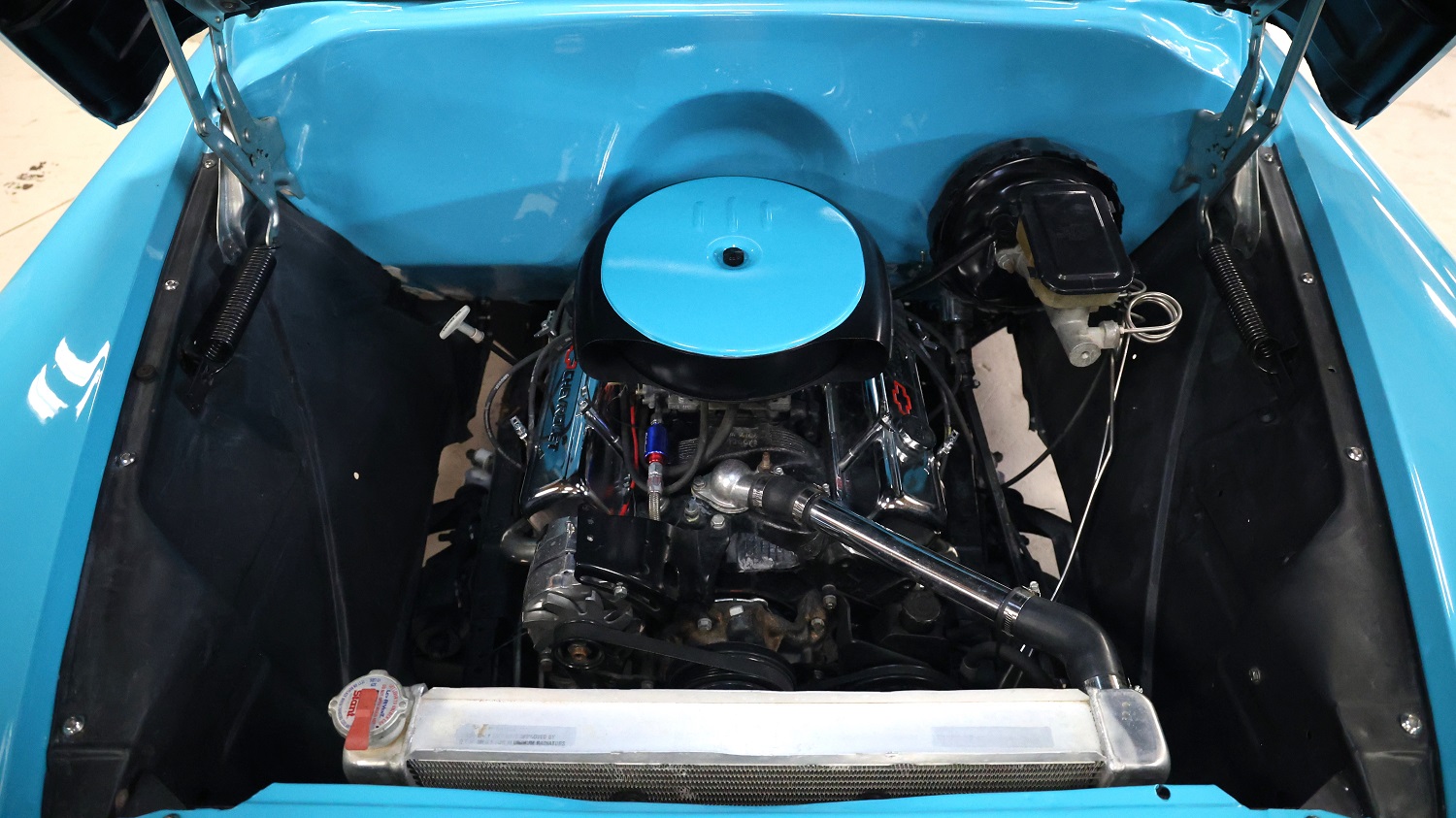
Chevy didn’t offer a 350 in the 1950s, but this Apache has a new one fresh out of the crate. It’s equipped with a four-barrel carburetor, chrome valve covers, headers, and aluminum radiator. A TH400 three-speed automatic sends its output to the rear axle.
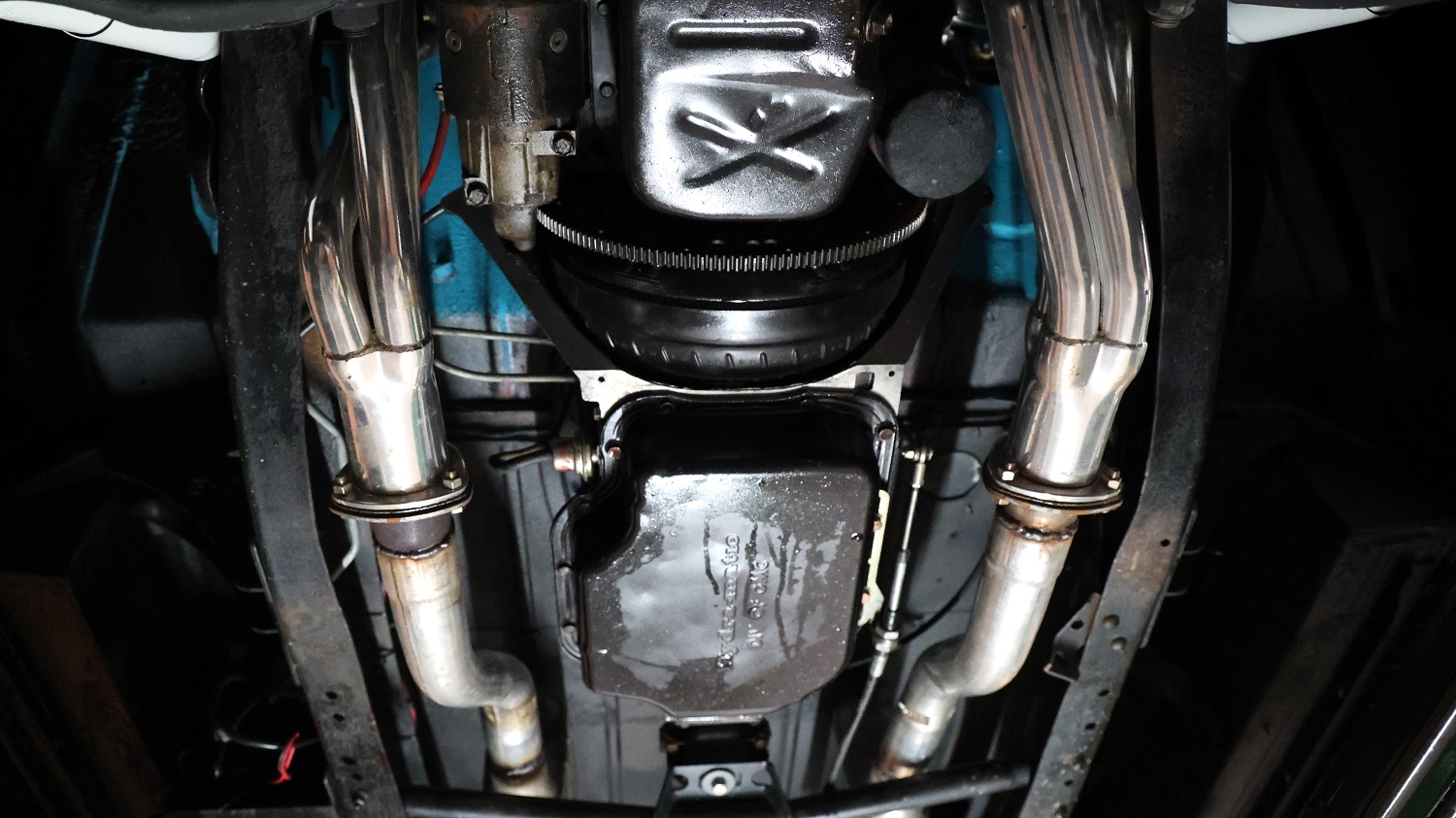
The original frame of this truck was swapped out for the underpinnings and suspension from a 1972 C10. Another upgrade was moving the fuel tank to underneath the bed.
If you want to make an upgrade to your garage, add this customized 1959 Chevrolet Apache 3100 Stepside to it. You can only do that by placing your bid—do that right away because the auction ends on Thursday, July 31 at 11:45 a.m. (PDT).
Visit the AutoHunter listing for more information and a photo gallery
Remember when Detroit was moving towards longer/lower/wider before the first oil crisis? In retrospect, Detroit was experiencing hubris, handing the Japanese (and certain quality Europeans) a large slice of the American automotive pie. Interestingly, in the late-1980s, certain German manufacturers moved towards the same design themes with some models, though hubris was not part of the equation. Our Pick of the Day, a 1997 BMW 850 Ci, is one of these vehicles. It is listed for sale on ClassicCars.com by a private seller in Charlevoix, Michigan.
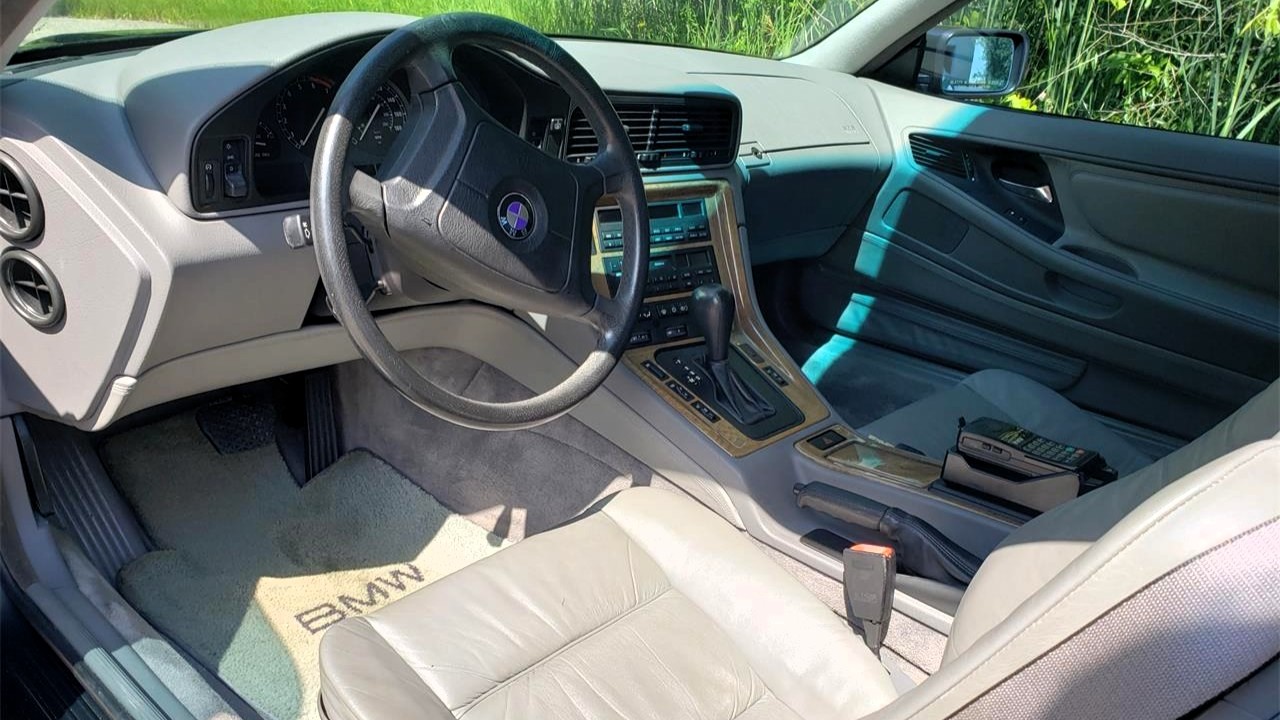
The BMW 8 Series can trace its origins back to the Neue Classe coupe that was introduced in 1965. It served as the basis for the “E9” coupes that began with the 2800 CS that was introduced in 1968. In 1976, it was replaced by the “E24” 6 Series, which was produced in much larger numbers as BMW continued to establish itself better in the United States. In 1990, a successor was introduced and christened the 8 Series.

The “E31” 8 Series appeared much larger than its predecessor, but its wheelbase and length were actually close to the outgoing model, with the 8 Series gaining 2.2 inches in wheelbase and one inch in length—in fact, based on the U.S.-spec 6 Series, the 8 Series actually was over five inches shorter. The 8 Series was a bit more upscale and compared favorably with the Mercedes SL that was introduced in 1988—again, another longer/lower/wider vehicle. When it was introduced, the E31 was available as the 850i with a 5.0-liter V12. As time when on, the V12 was increased to 5.4 (850 Ci) and 5.6 liters (850 CSi), plus the 4.0- and 4.4-liter V8-powered 840 Ci.
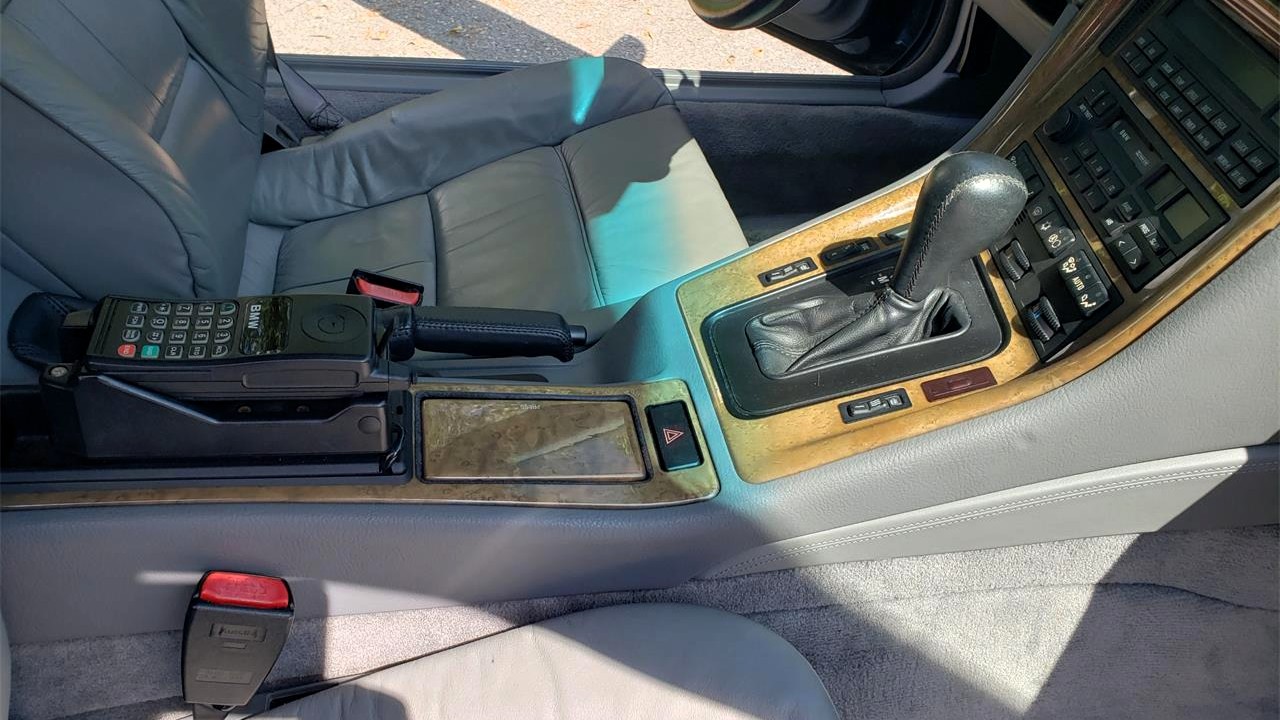
Unlike the 6 Series, the 8 Series was pillarless. As a car developed in the 1980s, it was among the first BMWs to have been entirely designed using CAD (Computer-Aided Design). Additionally, it was also among the first production vehicle with a drive-by-wire throttle and multi-link rear suspension. The fanciest of the bunch, the 1992-96 850 CSi, featured four-wheel steering for cars sold in Europe. Weight? Time for Richard Simmons, as the 8 Series was a porker at up to 4300-plus pounds at its heaviest.
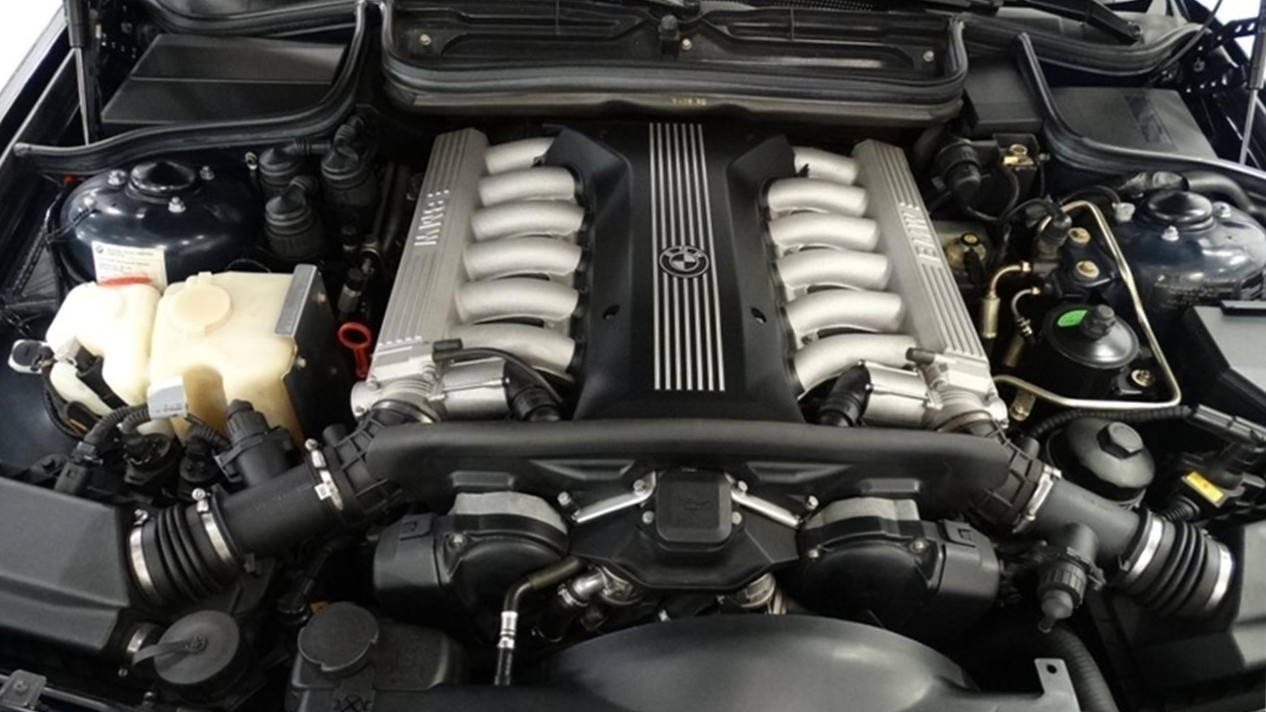
Though produced through 1999, U.S. production ended after the 1997 model year, making this Cosmo Black 1997 BMW 850 Ci the swan song of an unusual collectible. Power comes from BMW’s 322-horsepower “M73” 5.4-liter V12, which makes it one of 1,218 cars built, with approximately 363 sold in the United States. The car is backed by a five-speed automatic, as a six-speed manual was only available with the earlier 850i and the CSi. “This 850 has been meticulously maintained at a level 1 condition and always garaged,” says the seller. “The 850 has heated leather seats, automatic air conditioning, traction control, power windows and locks, power moon roof, and original phone. It also has a Blaupunkt stereo with an SD card slot, USB port, and a 6-CD changer in the trunk.”

With a low 55,000 miles on the clock, this is a prime example of a car whose time has come to be more celebrated among post-Malaise-era vehicles, even though its role as a future collectible has already transitioned. Perhaps now’s the time to avoid your own sort of hubris and catch one before the $72,500 price becomes a distant memory.
Click here to view this Pick of the Day on ClassicCars.com
To truly understand the world’s most rewarding driver’s cars, one must embrace the paradox at their core: they are as exhilarating as they are demanding. These machines invite drivers to dance at the edge of control, requiring not just skill, but commitment and resilience.
What sets them apart isn’t comfort or convenience—it’s the thrill that comes from feeling every vibration, every nuance of the road.
Each journey behind the wheel becomes a test of patience, nerve, and passion, where pain and pleasure are inseparable.
As Road & Track notes, the greatest driver’s cars are those that demand everything and, in return, offer a driving experience unlike any other.
